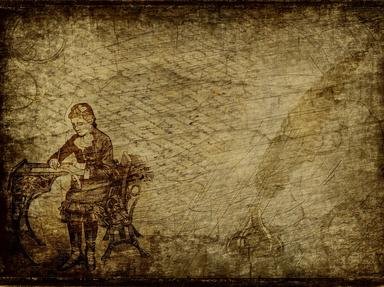Quiz Answer Key and Fun Facts
1. When we are introduced to Kala Nag, in the story "Toomai of the Elephants", and we are told he is nearly seventy years of age and has been in the service of the Indian Government for forty seven years. Who, or what, is Kala Nag?
2. The mother of Kala Nag, Radha Pyari, (Radha the darling) had told him that he would be hurt if he was afraid. So by the age of twenty five Kala Nag was no longer afraid. During his service for the Indian Government he was transported to a place called Magdala, in Abyssinia. At the end of the battle Kala Nag looked on the corpse of the defeated enemy leader. What was the name of the dead leader that appears in the story?
3. During his service Kala Nag saw many terrible things including seeing his fellow comrades dying of cold, epilepsy, sunstroke and starvation. During which colonial battle, which is named in the story of "Toomai of the Elephants", did this incident take place?
4. The son of Black Toomai, Big Toomai, called Kala Nag by another name. What name did he call Kala Nag?
5. During the story of "Toomai of the Elephants" the young Toomai is involved in a round-up of wild elephants. The elephants are corralled within an enclosure specifically designed to ensnare the elephants. What is the Hindi name that Kipling uses for this elephant stockade?
6. In "Toomai of the Elephants" little Toomai is chastised by his father for running amongst the wild elephants. His father tells him that the white man in charge of catching all the elephants for the Government of India has found out about little Toomai and his exploits in the elephant stockade. What name did Toomai's father call the white man in charge of the elephant round-up?
7. News of the exploits of little Toomai in the stockade found their way to the head-tracker of the elephant round-up. What is the name of this minor, but influential, character?
8. During the elephant drive most of the characters would have been on the backs of tame elephants. What is the name of the elephant that the white government official rides during the round-up?
9. When little Toomai meets the white Government official he is very shy and frightened to be in the presence of such power. So he gets his elephant to raise him up in front of the white official's elephant. The white man is impressed with this audacious little boy and asks him if he had taught the elephant to do this trick so that Toomai could steal green corn drying on the roofs of the nearby houses. The little boy, hanging eight feet from the ground, replies that he did not steal green corn but instead that he stole something else. What are the objects that Toomai stole using the elephant trick?
10. At the end of the story "Toomai of the Elephants" what was it that little Toomai had seen in the Garo hills that no other human had ever seen?
Source: Author
martinjudo
This quiz was reviewed by FunTrivia editor
agony before going online.
Any errors found in FunTrivia content are routinely corrected through our feedback system.
